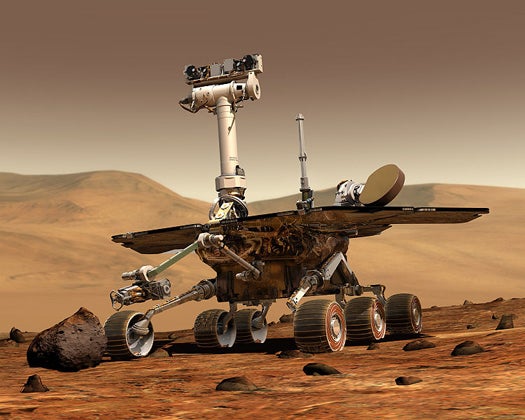Spirit Rover Shall Rove No More
After nearly ten months and countless efforts at twisting, turning and rocking for traction, NASA has conceded defeat in its...

After nearly ten months and countless efforts at twisting, turning and rocking for traction, NASA has conceded defeat in its effort to free the Mars rover Spirit from a sand trap near the Martian equator. But though the rover will likely never coast over the Martian landscape again, researchers do expect it to survive the upcoming winter and serve as a static science station going forward.
During its six-year stint on Mars, Spirit and its sister craft Opportunity have snapped thousands of images of the inhospitable surface and beamed back invaluable data to researchers on the ground that have spawned over 100 scholastic papers. It was Spirit that found and analyzed rocks and soil that showed extensive exposure to water in the past, changing the way researchers form theories about the Red Planet’s past.
But Spirit lost operation in one of its six wheels years ago and another has ceased function since handlers began trying to free it from its sand trap. As such, even if the researchers could get it free it would likely have trouble negotiating the Martian frontier.
Therefore, NASA has reprioritized its objectives, focusing on adjusting its northerly tilt so its solar panels will be in the best position to survived the Martian winter, during which temps will hit -49 degrees. But its electronics are expected to survive, meaning Spirit should revive come spring and serve as a stationary observation station.
In the meantime, in the spirit of Spirit, Opportunity rolls on.